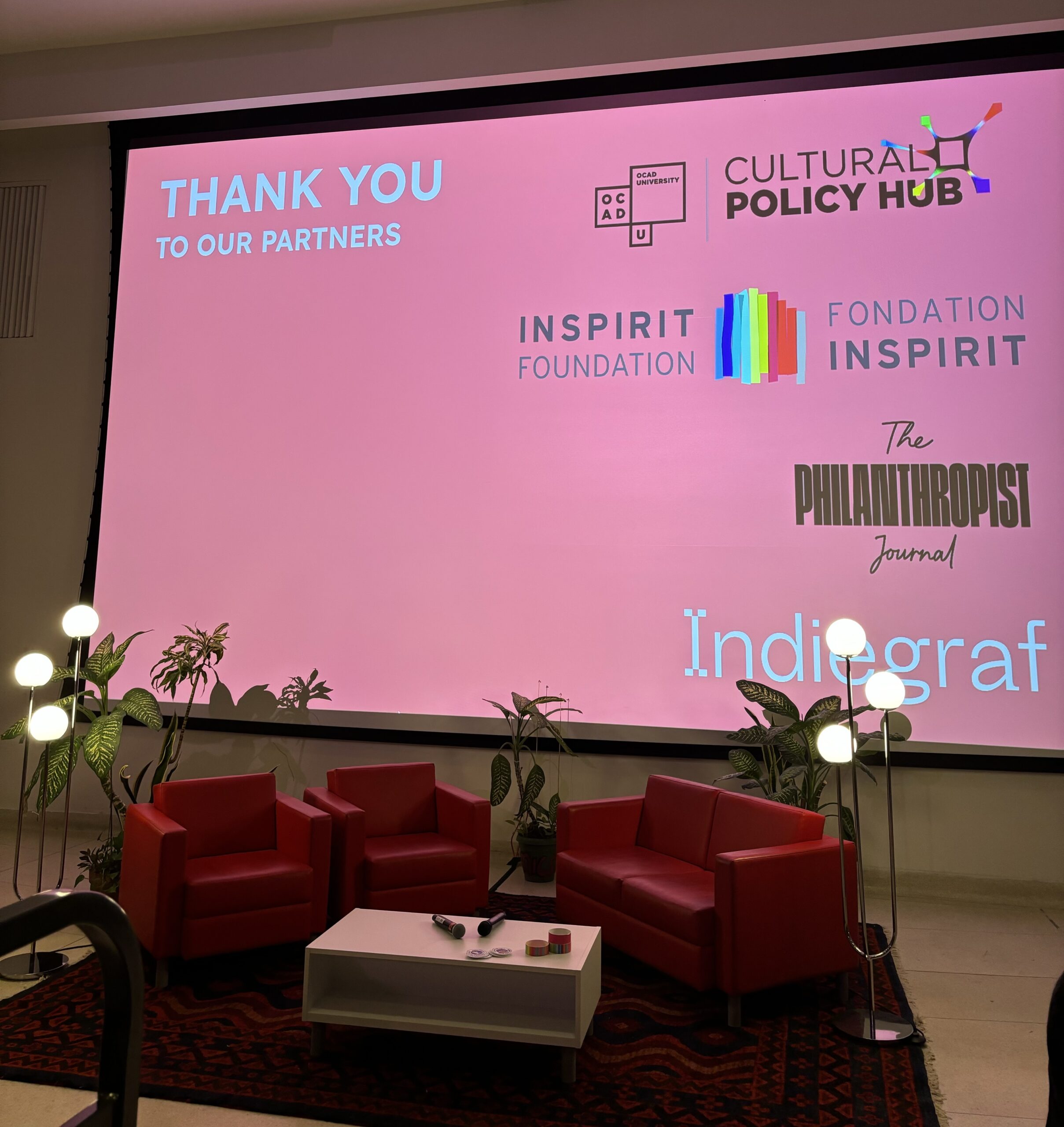In the face of mounting financial pressures and the impact of the Online News Act, independent newsrooms are pivoting to survive by embracing collaboration and partnerships with other media organizations, diversifying their content and fostering deeper community engagement.
Looking ahead, many are also exploring philanthropy or sponsorships as potential sources of funding, though concerns linger about how the latter may influence editorial independence and public trust.
“We need people to believe things can be better. We need audiences to believe in and want journalism,” said Jeanette Ageson, chair of Press Forward and publisher of The Tyee, at the Future of Independent Media Summit hosted by Press Forward for over 20 of its members in Toronto on Oct. 26 at OCAD University. Ageson’s words echoed the growing concern about the sustainability of independent newsrooms in Canada.
Ageson highlighted research by Toronto Metropolitan University professor April Lindgren showing a stark increase in local newsroom closures since 2008. Between 2008 and Oct. 1, 2024, 525 news outlets in 347 communities across Canada have shut down. Of those closures, 111 were community newspapers that folded after merging with other outlets.
Jeremy Klaszus, founder and editor of The Sprawl, a Calgary-based slow news outlet, said he initially joked about getting a printing press in response to the uncertainty around social media platforms after Meta banned news on Facebook and Instagram in 2023. That joke soon became reality when Klaszus found a Kelsey Excelsior 5×8 tabletop platen press on Facebook Marketplace from Vancouver Island. The Sprawl experimented with the press, hosting printing nights, and eventually launched The Sprawl’s Pop-Up Press.
In collaboration with the Calgary Public Library, The Sprawl introduced Grade 2 and Grade 3 students to the art of making one-page zines about their neighbourhoods. The Pop-Up Press has since made appearances at events like the Calgary Folk Music Festival and other community gatherings, blending traditional print with modern engagement.
Eric Wickham, a journalist and developer, also presented Unrigged.ca, a platform offering people in Canada access to the latest independent digital news. Made possible by a coalition of over 20 local, regional, and national media outlets from across Canada, Unrigged.ca aims to “grow audiences through cooperation,” said Wickham. The aggregator seeks to drive traffic to independent news sources and bridge the gap created in the wake of Bill C-18.
For its part, The Narwhal has been building a “full product line” for stories, explained director of audience Arik Ligeti. This approach involves developing stories into multiple formats, such as shorter explainers and interactive maps, giving readers the option to engage with more concise content. This strategy helps publications “meet people where they are” and the results speak for themselves, said Ligeti, as The Narwhal has seen a rise in newsletter subscribers.
Some independent publications are taking a more dynamic approach, rethinking the practice of journalism altogether. La Converse has created The Converse School, a program that trains apprentice journalists to tell stories from overlooked communities, with the aim of reclaiming their voice in the media. Community members also have the opportunity to participate in guided sharing circles to discuss issues affecting their neighbourhoods or sit down for a coffee with a journalist to share their personal stories.
For founder Lela Savić, building trust is central to La Converse’s mission. “We’re not just a journalism outlet,” said Savić. “We use journalism as a tool for intervention.”
Independent news outlets have demonstrated persistence in developing new business models through innovation, yet significant challenges remain. Attendees at the summit were asked the question, “What is the biggest obstacle to growth for independent journalism organisations?” The overwhelming answer: funding.
According to a Press Forward survey presented by Ageson, the top revenue sources for independent newsrooms are a mix of membership programs, grants, large private donations and government funding. While revenue has increased overall, so have expenses, staffing needs and publishing outputs. Some attendees expressed concern for future funding considering a change in government leadership would likely impact funding opportunities.
Lindgren noted that there are only around 36 foundations in Canada that currently support or have supported journalism—a much smaller number than is available to fund U.S. media outlets.
Tai Huynh, founding editor-in-chief and publisher of Toronto-based The Local, and Brandi Schier, CEO of Discourse Community Publishing, discussed available government funding opportunities for independent newsrooms. While there are options, the consensus was that navigating funding requirements has become increasingly complex, often requiring publishers to dedicate significant time and resources to the process instead of focusing on what they do best.
The keynote speaker for the summit, Katie Mercer, coach and advisor at Blue Engine Collaborative, a U.S.-based media consultancy company, shared insights from her work helping small news organisations grow. Mercer encouraged newsrooms to explore sponsorship deals, but warned that they should only partner with organisations with shared values and be transparent about these partnerships.
Attendees at the summit were asked, “If our journalism sector was robust and healthy, how would we know?”
“I would sleep at night,” said one attendee.
Saman is a Toronto-based journalist, research assistant at TMU's School of Journalism, with a background in communications.


